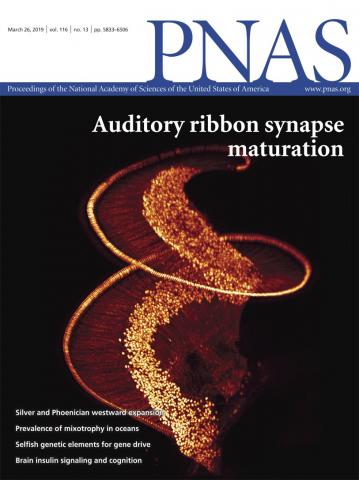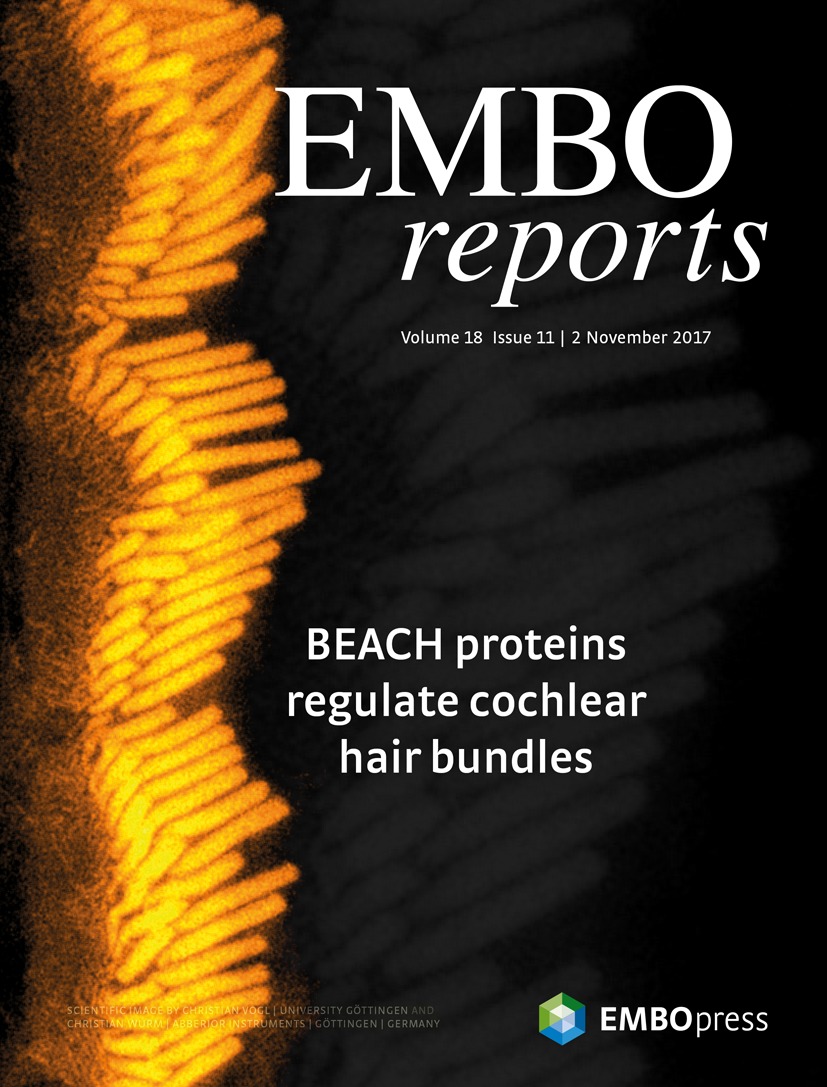Former Vogl Group
Presynaptogenesis and intracellular transport in hair cells
Ribbon synapses of auditory inner hair cells (IHCs) are capable of transmitting acoustic information with exquisite temporal precision. Here, sound encoding – i.e. the translation of a physical signal into neural code – is achieved by highly regulated presynaptic exocytosis of glutamate-filled synaptic vesicles onto postsynaptic fibers of spiral ganglion neurons (SGNs). In this context, it is commonly believed that the presynaptic ribbon itself plays a major role in orchestrating not only synaptic release (e.g. by clustering presynaptic voltage-gated Ca2+ channels and other components of the release machinery), but also rapid vesicular replenishment that ensures a constant supply of releasable vesicles and hence avoid synaptic fatigue.
Within the past decade, a vast range of molecular scaffolds and key regulators of these presynaptic complexes could be identified and have deepened our understanding of this unconventional synapse. Moreover, a large body of work has investigated mechanisms of synaptogenesis within the organ of Corti, providing insights into neuronal pathfinding within the tissue and synapse formation. However, fundamental aspects of synaptogenesis from a presynaptic perspective (i.e. ‚presynaptogenesis‘) – thereby linking the presynaptic molecular complex and the processes involved in synapse formation with the postsynapse – have so far been largely neglected. In this context, some of the most important questions that still require clarification are the following: (i) which molecular mechanisms determine presynaptic active zone formation and maturation, (ii) how are presynaptic precursors transported to their correct destination at the presynaptic active zone membrane and finally, (iii) does synaptic activity influence synaptic architecture at auditory ribbon synapses?
By combining AAV-mediated genetic manipulation of IHCs with long-term fluorescent single particle tracking and optogenetic stimulation of living cells, many of these open questions can now be adequately addressed. Specifically, we employ confocal and widefield-based long-term live-cell imaging as well as post-hoc immunohistochemical analyses and super-resolution microscopy (STED) to monitor activity-dependent structural plasticity and ribbon dynamics during hair cell development and identify molecular key players in this intricate framework with nanoscale resolution.
In 2023, Christian Vogl moved on to a position at the University of Innsbruck.



